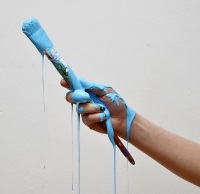Copyright © University of Cambridge. All rights reserved.
'Mixing More Paints' printed from https://nrich.maths.org/
Show menu
Mixing More Paints printable worksheet
This problem follows on from Mixing Paints.

A decorator can buy blue paint from two manufacturers.
- Paint A is made up from dark blue and white paint in the ratio $1:4$
- Paint B is made up from dark blue and white paint in the ratio $1:5$
She can mix the paints to produce different shades of blue.
What is the least number she would need of each type in order to produce blue paint containing dark blue and white in the following ratios:
$2:9$
$3:14$
$10:43$
$3:14$
$10:43$
You may wish to experiment with the interactivity below.
Another decorator buys blue paint from two different manufacturers:
- Paint C is made up from dark blue and white paint in the ratio $1:3$
- Paint D is made up from dark blue and white paint in the ratio $1:7$
What is the least number she would need of each type in order to produce blue paint containing dark blue and white in the following ratios:
$2:9$
$3:14$
$10:43$
$3:14$
$10:43$
Is it always possible to combine two paints made up in the ratios $1:x$ and $1:y$ and turn them into paint made up in the ratio $a:b$ ? Experiment with a few more examples.
Can you describe an efficient way of doing this?